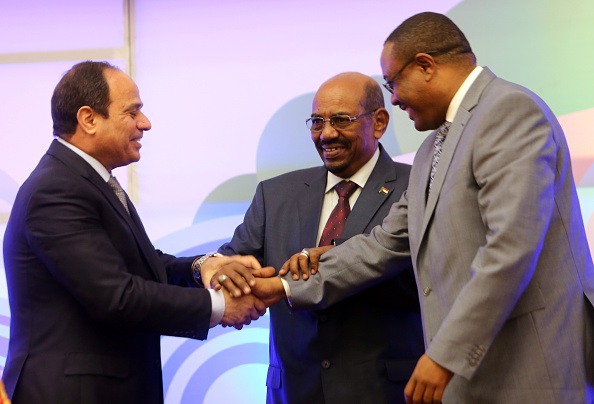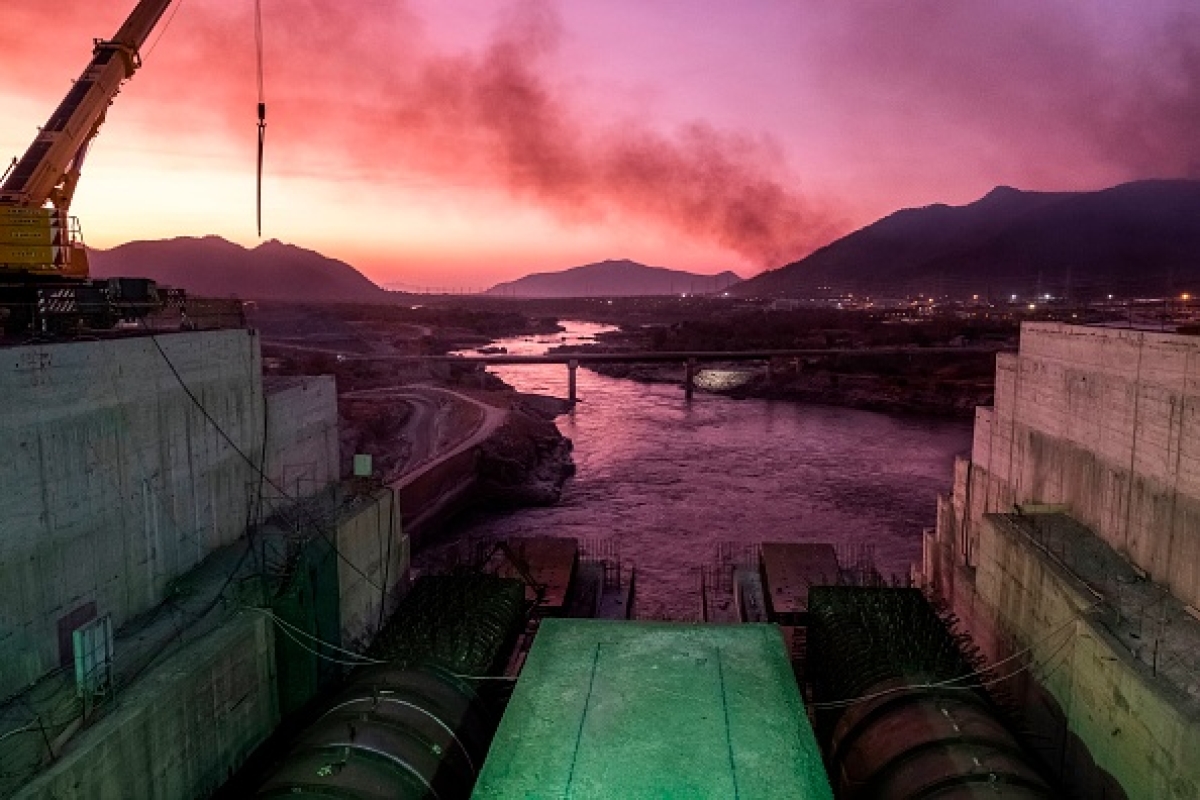So far, the project has generated the most intractable challenge yet amongst Egypt, Sudan, and Ethiopia and is, now, the Middle East and North Africa’s most complex and potentially most destabilising interstate freshwater dispute. Egypt has been attempting to raise international pressure on Ethiopia to strike a deal on the use of water from the Nile, which sustains life for tens of millions of people, however the latest round of African Union led-talks on reached another gridlock on Tuesday.
The crisis took a new turn on Wednesday when Ethiopia began filling the reservoir without singing an agreement on water flows, a step Egypt has warned will threaten regional security, bringing to a head a roughly decade-long dispute between the two countries, both of which are key U.S. allies in Africa and home to about 100 million people.
NATIONAL DANGER VS NATIONAL PRIDE
A 1929 treaty (and a subsequent one in 1959) gave Egypt and Sudan rights to nearly all the Nile waters. The colonial-era document also gave Egypt veto powers over any projects by upstream countries that would affect its share of the waters. Neither agreement made any allowance for the water needs of the other riparian states that were not parties to the deal, including Ethiopia, whose Blue Nile contributes much of the river waters.
Ethiopia has long believed that it should not be bound by the decades-old treaty. Mooted first by Emperor Haile Selassie in the 1960s, Ethiopia’s grand dam became a reality and a national obsession under Meles Zenawi, the long-time prime minister who ruled until 2012. He asked Ethiopians to finance it through donations and the purchase of low-denomination bonds from ordinary, poor people. Civil servants had to donate a month’s salary at the start. Local banks and other businesses were expected to buy bonds worth millions of birr. With almost every Ethiopian a stakeholder, it’s easy to see why the dam is a sign of renaissance and national pride.
Ethiopia went ahead and began constructing the colossal $4 billion Grand Ethiopian Renaissance Dam (GERD) in early 2011 at the start of the Arab uprisings, without compliance with international norms vis-à-vis Egypt and Sudan. Egyptian President Abdul Fattah al-Sisi was quoted as saying in September last year that it would never have got under way had Egypt not been distracted by the political turmoil.
With a projected capacity of 6,000 megawatts, the project is central to the country’s efforts to become the continent’s biggest energy exporter. It will provide power to 65 million Ethiopians, who currently lack a regular electricity supply. Ethiopia also maintains that the dam is crucial or attaining developmental goals and combating poverty.
The dam wouldn’t change Ethiopia’s water consumption, but Sudan and Egypt, which are downstream from the dam on the Blue Nile River, fear that it could seriously disrupt their water access. Ethiopia has been developing the GERD without engaging downstream countries in material issues that affect them or allowing them a full,independent evaluation of the GERD through Environmental and Social Impact Assessments (ESIAs).
Egypt almost entirely relies on the Nile and views the GERD as an existential threat. 90% of the country’s 100m people live along the Nile or in its vast delta. The river, long seen as an Egyptian birth right, supplies most of their water. Egypt fears that the dam could restrict its already scarce supply of the Nile waters, which is almost the only water source for its citizens and is already under pressure because of climate change. It could also affect transport on the Nile in Egypt if the water level is too low and affect the livelihood of farmers who depend on the water for irrigation.
Sudan is caught in the middle in the dispute over the dam, which lies about 20km from its border: It could benefit from cheap electricity, and controlled water flows could help to prevent flooding and grow more food. But Khartoum fears that a lack of coordination could lead to its own Roseires Dam becoming overwhelmed, increasing the flood risk for millions downstream.

THORNY OBSTACLES
While years of bilateral and multilateral talks, expert commissions, an agreed Declaration of Principles between Egypt, Ethiopia and Sudan have resulted in the three sides reaching 90% of a deal, they have failed to produce a deal on how fast to fill the reservoir, how much water will be released during droughts and how to resolve any future disagreements.
Egypt wants Ethiopia to fill its reservoir slowly and to release enough water so that the river’s flow is not disrupted, especially during droughts. Ethiopia feels it is being forced to run its reservoir down too much during periods of drought which they say would undermine energy generation. Egypt wants commitments now and have called for disagreements to be resolved through binding international arbitration, while Ethiopia wants the three countries to take things year by year and settle and disagreements through negotiations.
Now the deadline has arrived: Ethiopia has started the reservoir this week at the start of the wet season in July, when rains flood the Blue Nile. It is a process that is expected to take up to seven years. Filling the GERD without a deal sharply escalates tensions.
WARTIME RHETORIC
The International Crisis Group warned last year that the two American allies "could be drawn into conflict" over the dam. A conflict between the two states could draw global interest as it would put millions of civilians at risk. It would threaten the vital international trade route through the Suez Canal and along the Horn of Africa.
Egypt has a history of threatening military action against states that contemplate building dams on the Nile River. In 1979, Egyptian president Anwar Sadat stated that “the only matter that could take Egypt to war again is water.” President al-Sisi has been quoted as saying that Egypt would take all the necessary measures to protect their rights to the Nile waters. Last month Ethiopia even accused Egypt of sponsoring cyber-attacks to disrupt the project.
Cairo’s increasingly bellicose tone is met with wartime rhetoric and threats in Addis Ababa, where officials are seeking a quick return on their $5bn investment. In October last year, Ethiopia’s Prime Minister Ahmed, a Nobel peace prize-winner, warned: “No force can stop Ethiopia from building a dam. If there is need to go to war, we could get millions readied.”
Worsening ties over Ethiopia’s intention to start storing the Nile’s water in the dam’s reservoir compelled Egypt to call for intervention. Talks the US and World Bank mediated amongst the three riparian countries from November 2019 to February 2020 collapsed before the final meeting, when Addis Ababa rejected a binding agreement with Egypt and Sudan on the filling of the GERD’s reservoir and the dam’s operation.
In June, Egypt filed a request for intervention with the UNSC, citing Article 35 of the UN Charter that pertains to threats to international peace and security. In two letters to the UNSC in June, Sudan also voiced its deep concerns about Ethiopia’s rush to fill the reservoir without an agreement, citing very high risks to the lives of millions of Sudanese.
The African Union has said it will try and find a solution but the Egyptian ministry said the virtual meeting held earlier this month failed to yield an agreement on both technical and legal levels.
TWO-FRONT CHALLENGES
For both countries, this is far more than a technical or legal issue. It has major economic and thus political implications and affects each country’s self-image, which generates considerable domestic pressure to stick to maximalist positions. Partly for this reason, Egyptian negotiators do not believe that Ethiopia is committed to reaching an agreement. They also accuse Ethiopia of dragging out the talks to gain bargaining power as construction advances. Ethiopia, in turn, suspects that Egypt is stuck in the past, attached to defunct treaties that allow it to dominate the Nile waters.
Up for re-election next year and facing prolonged serious unrest and political challenges since he took office in 2018 that have dented his support and the stability of his government, Abiy Ahmed, the prime minister, is under pressure to take a hard line on over perhaps the only issue that unites citizens of all ethnicities. On June 30th protests erupted after a popular musician from the Oromo ethnic group was killed, a reminder of how thin the facade of national unity is. Rivals at home have seized on the PM’s perceived weakness.
Egypt also does not have much scope to compromise. Egypt is already short of water. The UN sets the threshold for scarcity at an annual 1,000 cubic metres per person. In 2018 Egyptians had just 570 cubic metres; even without the dam, that could drop to 500 cubic metres within five years. The Egyptian president is also worried about developments on his western border. Egyptian-backed Khalifa Haftar, who last year vowed to capture Tripoli, was pushed back after Turkey sent armed drones and Syrian militiamen to support the UN-recognised government in Tripoli. Egypt sees a Turkish presence next door as a threat and last month President al-Sisi said his country had a right to intervene in Libya.







